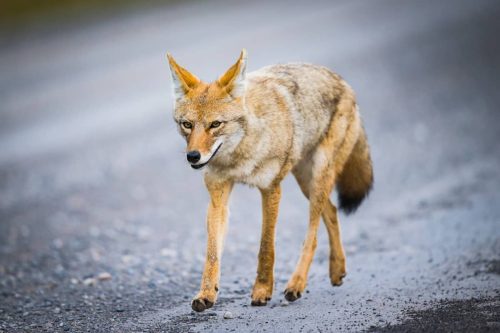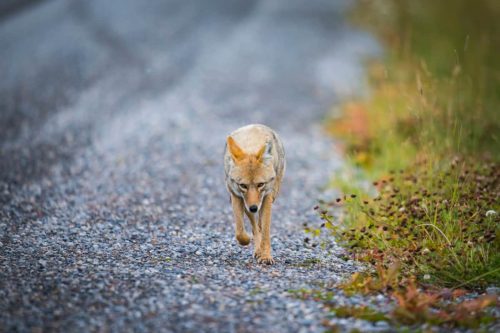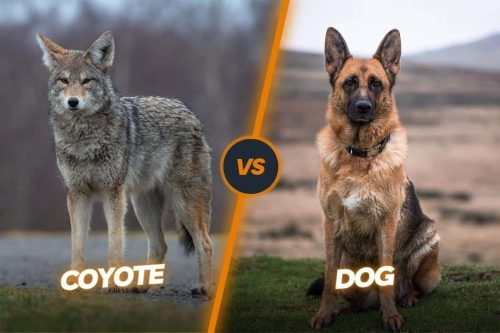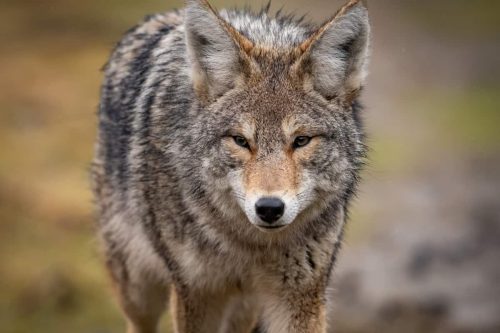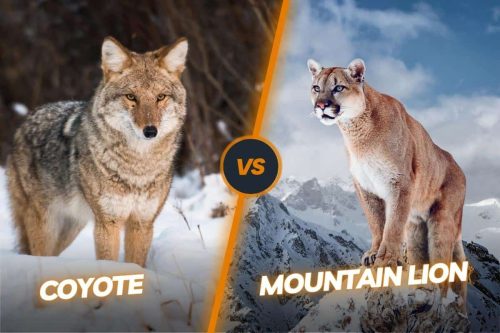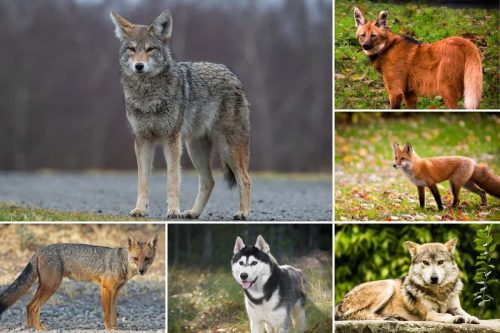Dingo Vs Coyote Comparison: Who Would Win In A Fight?
Dingos and coyotes are medium-sized wild animals belonging to the canine family. They live in altogether different geographical regions of the world. Dingo primarily resides in the Australian continent while the coyote is solely the wild animal of the North American continent. Both animals are good in terms of their hunting and killing skills. Dingoes actually don’t have any direct relevance with the animals like coyotes. They are directly related to the wolves. Dingoes are actually the subspecies of the wolves.
There are some obvious differences between coyotes and dingoes in terms of their size, hunting skills, social behavior, and dietary patterns but there are many more things to discuss about these animals. In this article, we are going to explore the comparison of dingo vs coyote in a very detailed manner.
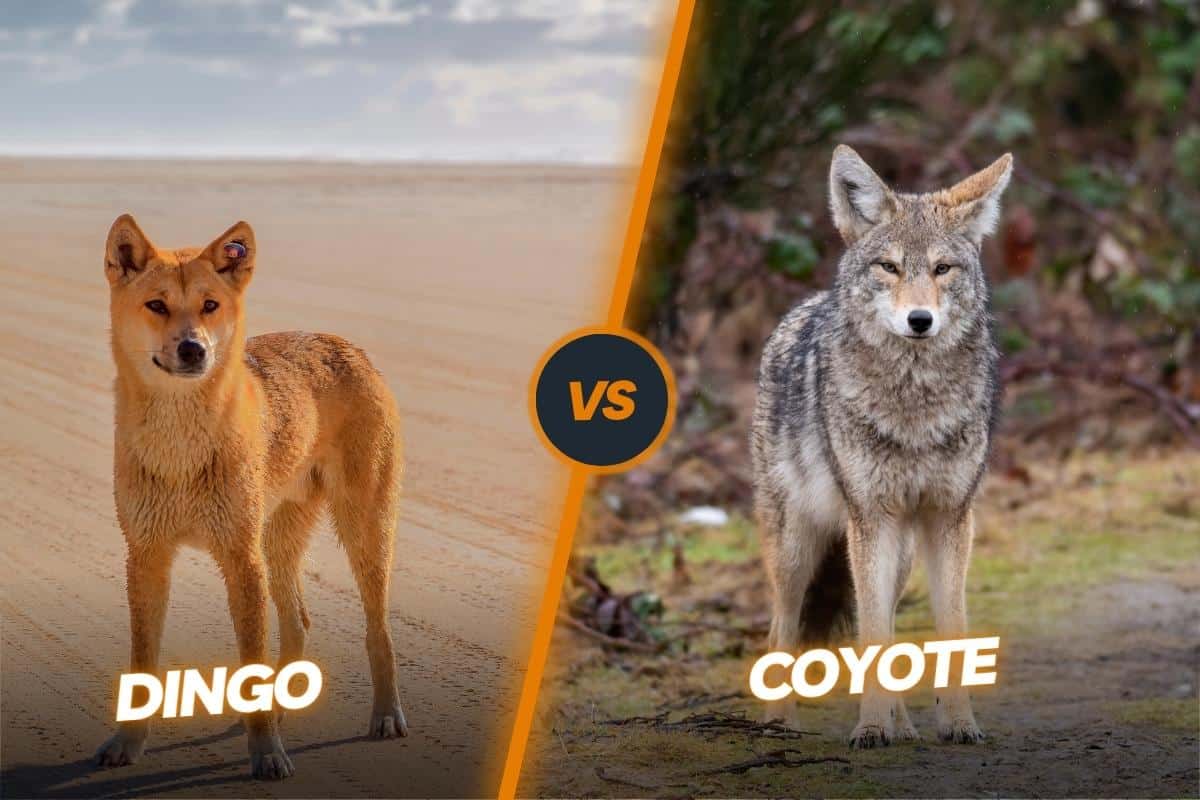
Comparing coyote vs dingo
There is no direct link between coyotes and dingos but they are interlinked with the help of a third animal named as wolves. Coyote shows a lot of resemblance with the wolves. That’s why they have also been named bush or prairie wolves. Dingoes are actually the subspecies of the wolves. This is how we can interlink the coyote with the dingo. Coyotes have many subspecies but the dingoes are the subspecies of the wolves. This thing also makes it more exciting to make these animals like coyote and dingo which are not directly but after all, have some indirect links.
Let’s have a look at some of the differences in the form of a chart.
| Features | Dingo | Coyote |
|---|---|---|
| Size | Weight: 22-33 pounds Height: 20-24 inches Length: 3-4 feet | Weight: 15-47 pounds Height: 22-26 inches Length: 3.5-4.5 feet |
| Body shape | Wedge-shaped head, lean body, fatty tail. | Thin body, muzzle |
| Speed | 37 mph | 35-40 mph |
| Color | Ginger, black, white, tan | Grey plus reddish coat, white underbelly, and throat |
| Teeth | 1-1.5 inches | 1-1.5 inches |
| Bite force (BFQ) | 113.28 | 88 |
| Geographical location | Australia | North America |
| Habitat | Mountains, grasslands, forests. | Grasslands, deserts, forests. |
| Social behavior | Pack animal | Pack plus solitary nature. |
| Gestation period | 60-70 days | 60-63 days |
| Diet | Cattle, sheep, birds, rabbits, possums, kangaroos, fish, and insects. | Rodents, rabbits, hares, lizards, snakes, insects, and white-tailed deer. |
| Hunting skills | Attack from behind at the neck and trachea. | Pouncing, stalking, biting, targeting throat. |
| Sounds | Growling, whining, barking, howling | Whimpering, growling, howling |
| Predatory behavior | Jackals, crocodiles. | Cougars, wolves, bears, |
| Life span | 7-8 years | 10-5 years |
| Conservation status | Protected species | Least concern |
It is a brief comparison of these animals. Let’s have a look at the key differences between dingo and coyote.
Size: Dingo vs Coyote
Dingos and coyotes as you know may live in altogether different parts of the world but they are almost the same size. Coyote has a length of almost 3 to 4.5 feet while the length of a dingo is almost 3 to 4 feet. A coyote has a longer tail which is almost 16 inches in length while the length of the dingo is 12 inches. The height of the coyote is almost 26 inches while the height of the dingo is almost 24 inches till their shoulder. Dingoes exhibit more dog-like features with large pricked ears.
When it comes to weight, the coyote is a little bit heavier than the dingo it has the maximum weight of 47 pounds and the maximum weight of the dingo is almost 33 pounds.
Body shape
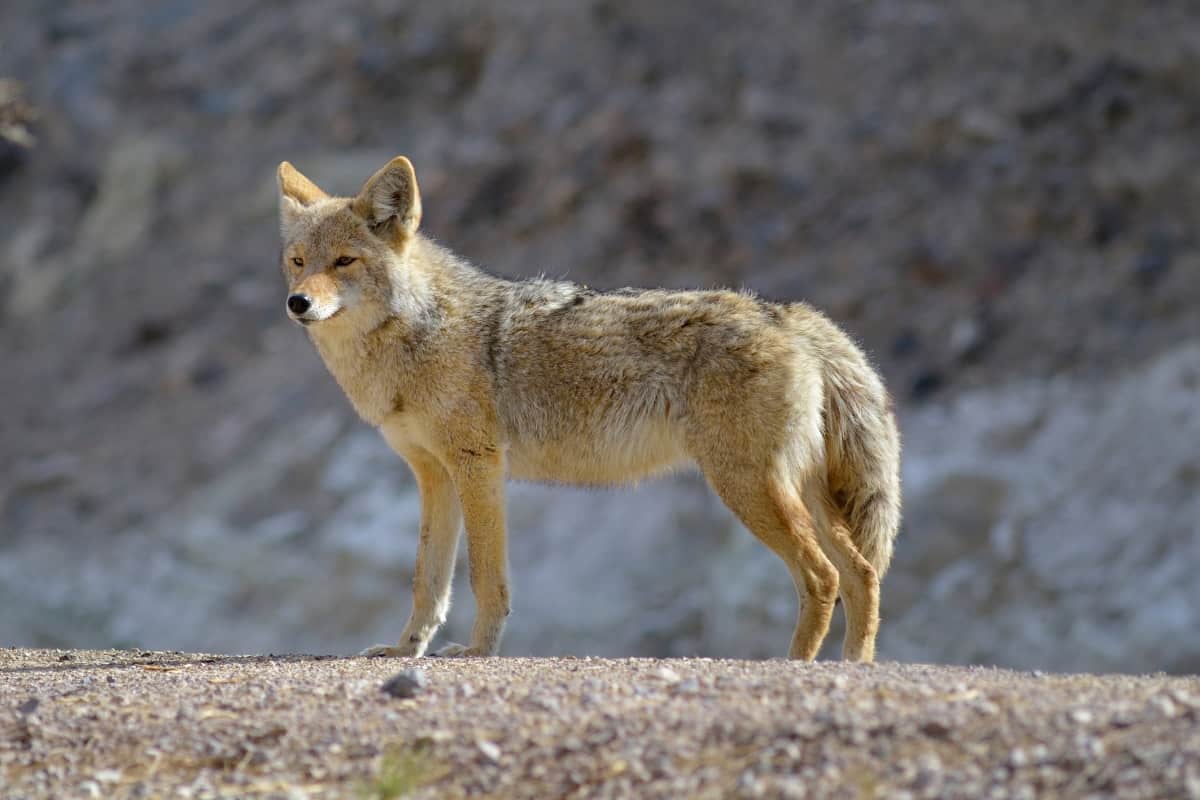
Both of these animals differ in terms of their body shape. The main difference lies in the head of these animals. Dingo has a very lean but wide body along with a wedge-shaped head. The widest part of their body is their head which is the very thing in the animals. They have a flat tail but curling at the back.
On the other hand, the coyote has a thin and lean body. They have muzzles on their face. At the head, they resemble the wolves. Overall they are heavier and slightly larger than dingoes.
Also read: Are coyotes smart?
Speed: Coyote vs Dingo
There is not much bigger difference in terms of their speed. The speed of the coyote lies between 35-40 mph while the speed of the dingo is almost 37 mph. Some of the dingoes run very fast and they can also outrun the coyote.
Color
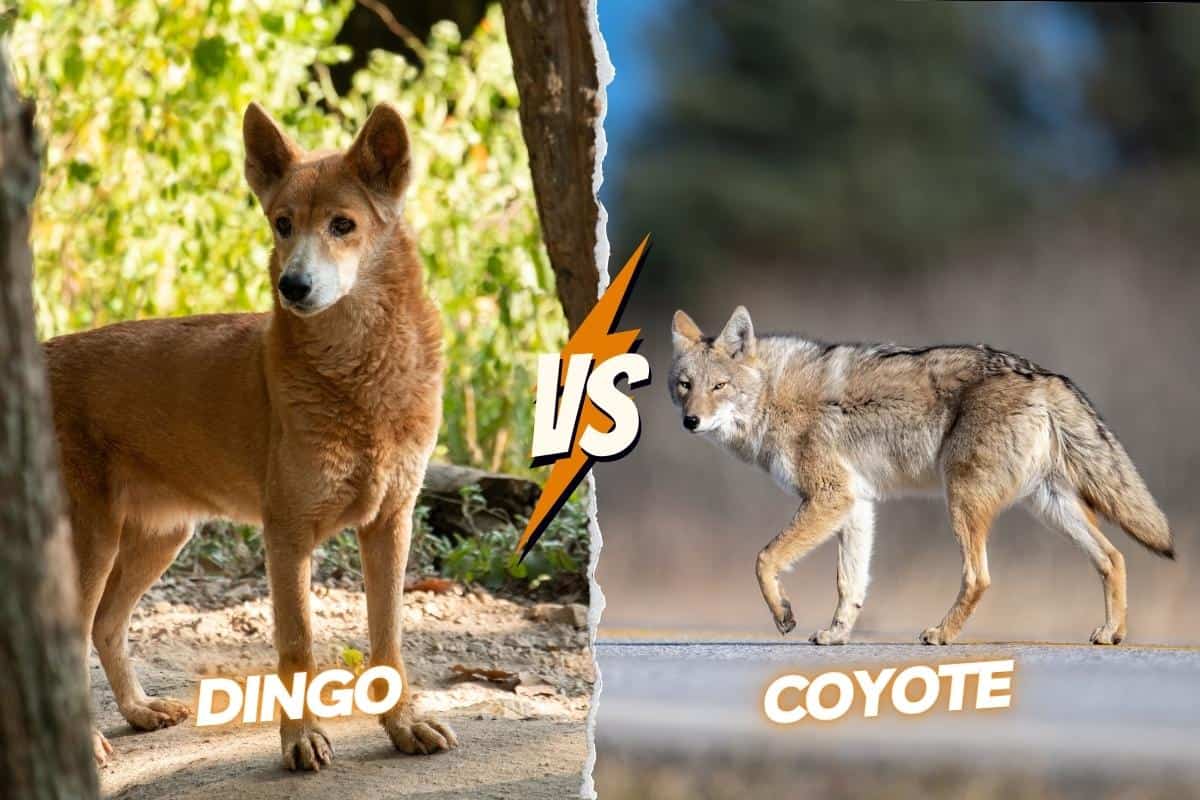
The main difference between these animals comes in terms of their coloration. Coyotes usually exist in a mixture of grayish plus red color but they have white color in the throat and underbelly. On the other hand, dingoes usually exist in a tan color and sometimes with a mixture of other white and black colors.
Teeth: Dingoes vs coyotes
As you know both of them belong to a canine family and also both of them have the same size. That’s why the teeth size of them lies between 1 to 1.5 inches. They have very sharp and strong teeth. They can utilize these teeth in breaking bones and sometimes tear apart the flesh of these animals.
Bite force: Coyotes vs Dingoes
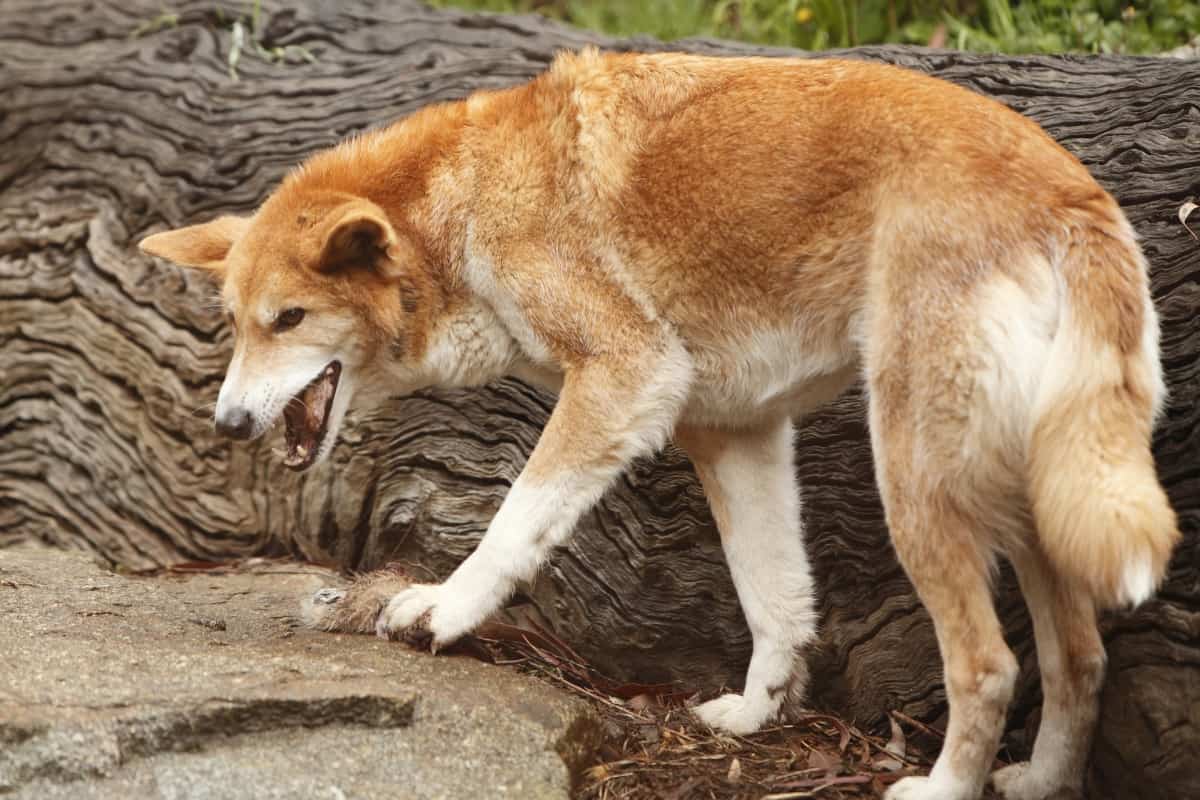
They have similar skull and teeth size but the bite force of these animals vary. Coyotes have weaker bite force as compared to dingoes. If we compare the bite force of these animals in terms of numbers then we can say that the bite force quotient of the dingo is 113 which is almost equal to 906 PSI.
On the other hand, the BFQ of the coyote is just 88 BFQ which is almost equal to 680 PSI. The jaw strength of the Dingo is also very much strong compared to the jaw strength of the Coyote. They can easily crush the bones and tear apart the flesh of their prey.
Sounds
Coyotes are very well-known for the variety of sounds they can produce. They are very vocal and have been named Canis Latrans or barking dogs. They can produce almost 11 different kinds of sounds like whimpering, whining, howling, growling, barking, etc.
On the other hand, dingoes are not capable of producing these sounds. They can bark but they rarely apply the barking sound in their routine life. It is mainly used for giving warnings about anything dangerous. They mainly communicate with the help of whimpering, howling, and growling.
Hunting skills

They vary a lot in terms of their hunting skills and techniques. Dingoes are among the top predators in Australia. They can easily bring down large animals like Kangaroos with the help of their pack. The size of their prey depends upon the size of their pack. They like to attack from behind and also target the neck in their attacks. In this way, they can damage the blood vessels and trachea.
When they are in a pack, they can target a variety of prey like Kangaroos, cattle, and wombats. Possums, rabbits, birds, amphibians, and wallabies. If they are alone then they like to prey on small mammals like rabbits.
On the other hand, coyotes are opportunistic predators. Among the big animals, they can target white-tailed deer, elk, mule deer, pronghorns, etc. They stalk their prey for some time and then suddenly pounce it. They attack from the front and target critical parts like the neck and head. They like to eat meat only but they could also eat some fruits and berries in case of emergency.
Social behavior
Both of these animals belong to the canine family. They like to live in packs to meet their many needs. It usually happens when they mate with their counterparts. The pack becomes more necessary when they produce offspring. Other than this, they need to be in packs if they have to target large animals. This kind of behavior is very common in both of these animals but coyotes also like to spend some time alone. Sometimes they like to forage and hunt alone.
Dingoes show the same behavior as dogs. They are solitary by nature but they have to make a pack for hunting large animals. Dingoes are very territorial by nature and always defend their home range at any cost. Both of them usually mate once in a year. Australian dingoes’ mating season lies between March and April while the coyotes mate in the winter between January and March.
Diet
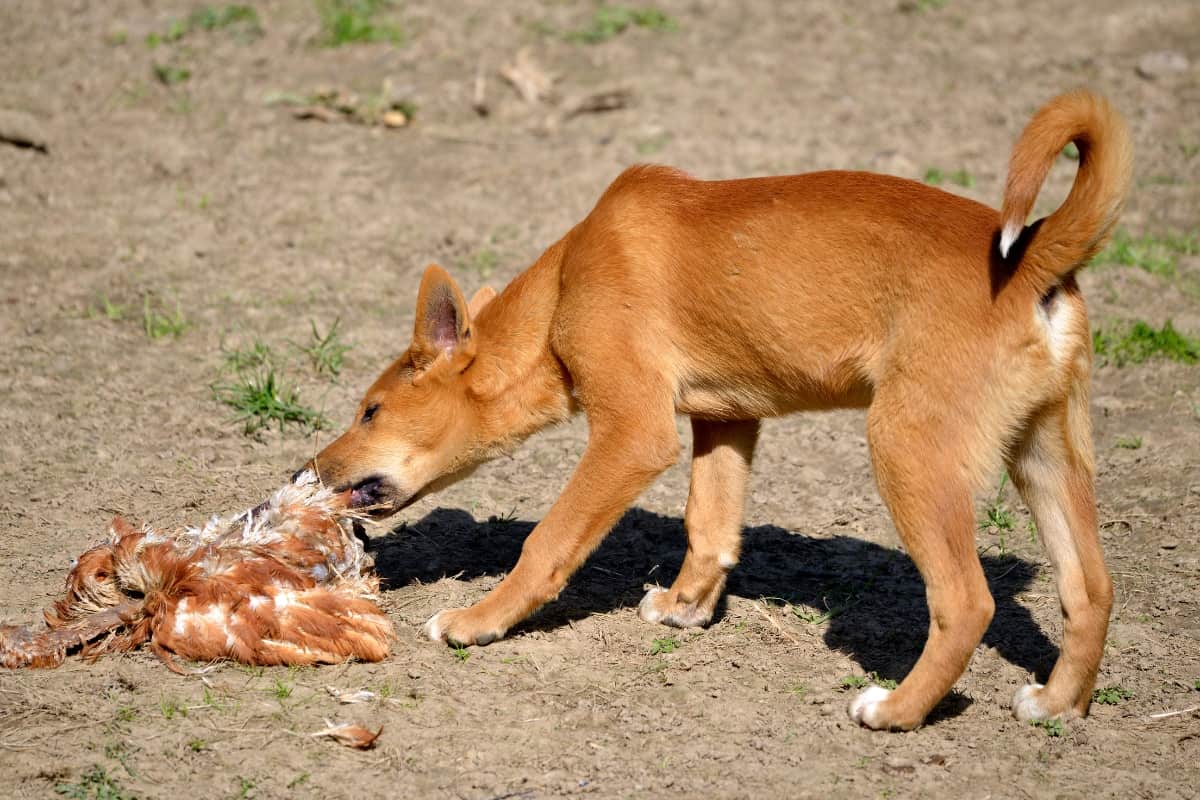
Coyotes are carnivores by nature and like to eat meat. They prefer to prey on small mammals like rodents, rabbits, lizards, and sometimes birds. They also complement their diet with the help of plants and fruits. Nowadays, they have very close proximity to human beings. They also rely on household trash, poultry, livestock, and pets.
On the other hand, dingoes are also carnivores by nature. They also mainly prey on small mammals but they form packs for the hunting of large animals. They like to eat reptiles, birds, etc. In case of emergency, they also rely on plants.
Conservation status
Coyotes have a very good population throughout the North American continent. That’s why they are the least concerned on the red list of the IUCN. On the other hand, dingoes are vulnerable in this regard. They may not face extinction but they are very less in number throughout Australia. It has been estimated that there are just 10k to 50k dingoes in the Australian continent. That’s why they are not allowed to be hunted by the hunters and protected species of the continent.
Who would win Coyote vs Dingo?

First of all, it is extremely difficult that these animals could fight with each other because both of them are living in altogether different parts of the world. It is almost impossible that they would cross paths in their life as the dingo is primarily living in the Australian continent while the coyote is an animal of the North American continent. If we assume that they cross their path and the fight happens between them then the fight would be evenly matched. Both of them are good hunters with sharp claws. Coyotes have a slight edge over dingoes in terms of their larger size and heavy weight.
Frequently asked questions
Conclusion
Dingoes are unique animals of the Australian continent. They may not have any direct relation with the coyote and they also live in altogether different continents. But they belong to the same canine family and they also show some facial similarities. That’s why it is very important to explain this dingo vs coyote comparison. It will help you a lot in understanding the physical features of these animals and the social behavior of these wild dogs.

Izzy is an experienced ranch worker who has a passion for exploring nature and getting up close to wildlife. With her connections to various animal organizations, Izzy is well-versed in animal care and rehabilitation.

